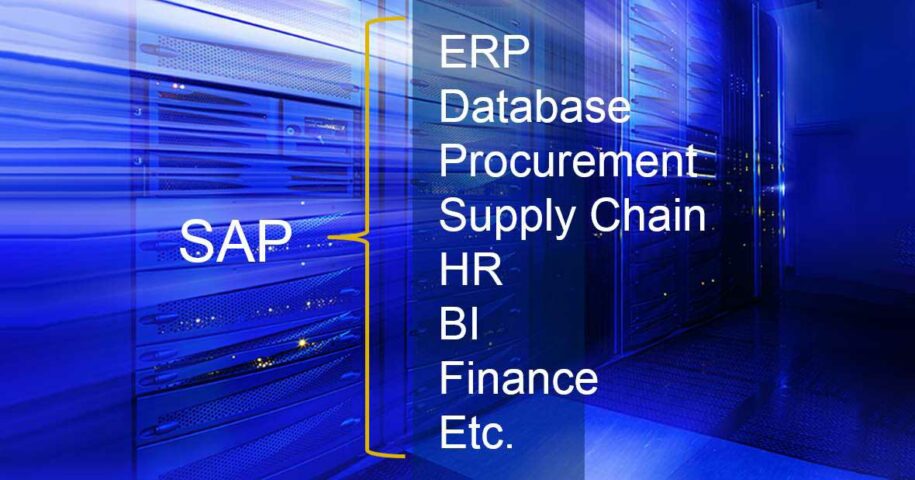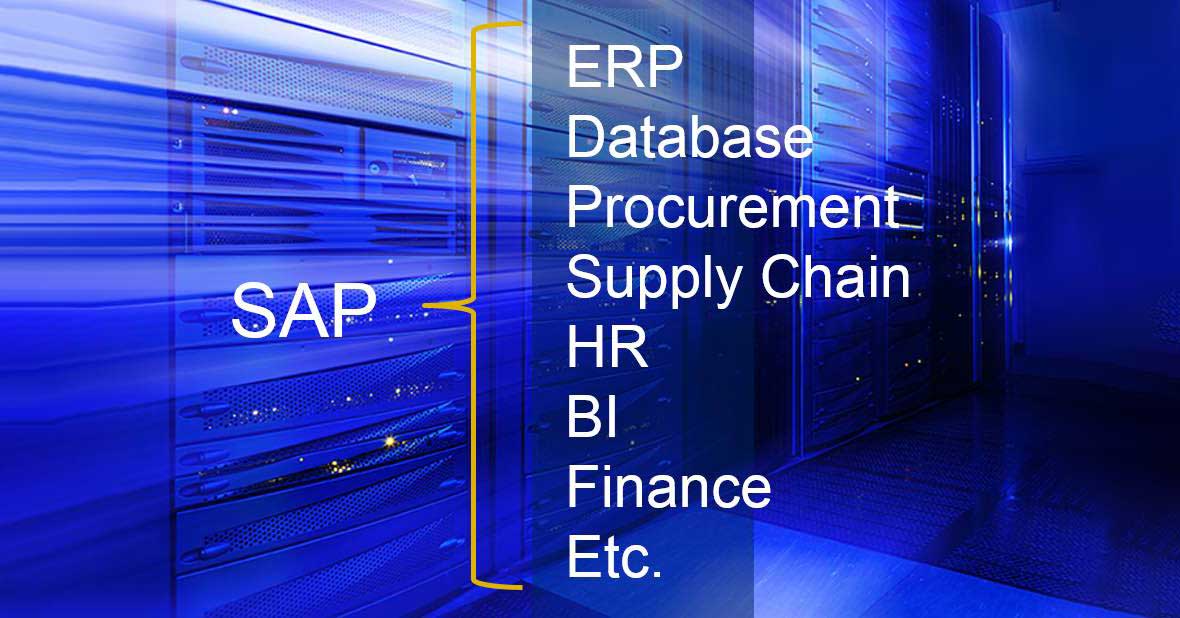SAP is the fourth largest software vendor in the world and is critical to many organizations. Its robust applications support important processes such as Enterprise Resource Planning (ERP), Human Resources (HR) and Customer Relationship Management (CRM).
Being a key provider, it is also an expensive one… large organizations have yearly spending in millions on maintenance renewals and on new technologies including HANA, Business Objects and SAP Cloud for Analytics (C4A)
This is where a software license manager’s life becomes stressful.
SAP brings real value to customers that fully depend on its applications, but sometimes customers are completely in the dark on software asset management for their SAP applications:
- Operational teams make sure things work, with no focus on the SAP licensing costs. Taking the example of SAP ERP / CRM:
- Users are created with incredibly complex profiles: they have tens of roles that include hundreds of authorized transactions
- Accounts are created with no license type because its hard to foresee who really should be allocated what license type at account creation
- The team members managing SAP licensing are in a tricky situation:
- They are exposed to huge liabilities:
- By default, any user is a Professional User; having accounts created with no license types turns into millions of risks
- Users’ accounts are not properly managed: all newcomers have a SAP account created, with no consideration as to what is really needed; there is often no process to retire accounts when people leave the company
- I have seen a company with USD300 million liability (price list) and another with a €200 million noncompliance true-up bill as a result of this uncontrolled situation
- The pressure from SAP is huge:
- Like in any other software company, the sales team has yearly objectives that are growing. In a mature organization, maintenance on existing scope is not enough. Selling new technologies or finding software license compliance issues with software audits are two ways of resolving this… in the current dysfunctional software supply chain, customers get audited.
- The customer’s SAP licensing team is not fully armed:
- They have limited information. A list of 700,000 accounts scattered over 200 systems is not something manageable for any human being
- They are lost in the 50 shades of grey of SAP licensing (see below)
- They can just take the heat and be in a very, very bad position to negotiate at the time of an audit
As a result, the easy, but expensive option that many SAP customers take is an SAP Enterprise Agreement that guarantees some tranquility: all you can eat contract – any user can be a Professional – at a “friendly” price. Everybody is released (SAP account Manager, Customer SAP Licensing team). Everybody except the customer’s CFO!
It is then very hard to take the handcuffs off… but it is still possible. Or even better, it is possible to avoid the handcuffs in the first place!
The key to the handcuffs is in turning the 50 shades of grey of SAP licensing into black and white, and translating this controlled situation into contracts that are fair for both SAP and you, the customer.
Why is grey the preferred color of SAP?
- There is no enforcement of users’ license types according to what they really do. You can be given an SAP developer role and be allocated an ESS user License Type at less than a tenth of the cost.
- The definition of license types is public – url: Licensing SAP® Software – A Guide for Buyers
- But, the definitions are also extremely vague: the two license types below have similar rights, commonly accepted. An SAP Professional User needs SAP for his work while a limited Professional is occasional… this vague definition makes a huge per user difference!
- “An SAP Business Suite Professional User is a Named User authorized to perform operational related and system administration / management roles supported by the licensed Software (excluding SBOP) and also includes the rights granted under the SAP Business Suite/ individual SAP solution Limited Professional User.
- An SAP Business Suite Limited Professional User is a Named User authorized to perform limited operational roles supported by the licensed Software (excluding SBOP) and also includes the rights granted under the SAP Business Suite Business Information User. The license agreement should define in detail the limited use rights being performed by such Limited Professional User.”
The contract never gives the details that remove the ambiguity.
- There are forbidden tables for given types (provided by user activity measurements), but no list of forbidden tables is clearly communicated. Table updates are not easy to track in SAP.
- Accounts are consolidated across systems.
- And there is the ‘new’ big stick: indirect usage: “any third party application, accessing SAP systems should be licensed for each user interacting with the third party application for the license type that would be required if the user was doing similar activity directly on an SAP system”. This has become an tough, potentially £55 million reality recently for Diageo—see PCWorld: SAP license fees are due even for indirect users, UK court says – PC …
Is SAP to blame?
- By design, it is extremely hard to create black and white rules: customers and SAP partners create hundreds of transactions that potentially can do anything: in a medium large customer (20,000+ SAP users), I often identify 130 000 distinct transactions and reports.
- Regarding indirect access, many publishers have similar rules.
Be better informed than your auditor… this will save you!
The key is to get control over the licensing situation to move to a fair discussion and a fair contract… You must become as informed or even better informed than the vendor or auditor, in case of an audit. If you have facts to discuss, even grey rules, you cannot be fooled, you can argue, even in an easier way that the rules are fuzzy. Let’s take two cases that closely represent what I have experienced multiple times:
Case1: Chaos— SAP has the power
- “Mister customer, our audit revealed you have 5000 consolidated accounts that have no license types”
- This represents a liability of 25 million, but you can pay 4 million and move to SAP HANA which we can offer you at a discount of 30%. This will be 3 million more, but you have a good deal and can start using this best-in-class technology!
Case 2: Controlled situation
IT Asset Management
It all starts with knowing what’s in your IT ecosystem. Flexera One discovers even the most elusive assets whether on-prem, SaaS, cloud, containers and more.
- “Mister SAP, here are all the results. I have defined my license types based on actual utilization:
- Time per week for Limited Professional users
- Use of these 25 transactions for ESS users
- Use of these 145 transactions for Employee users
- Use of the developer key for developers
- And… we have consolidated users accounts not just based on account name like you do, but removed other duplicate users
- And by the way, I didn’t tell you that I retired 2000 accounts of people who left”
The customer has the negotiating power in situation 2 and the relationship with SAP moves from intimidation (Mr Customer, you have done something bad and you don’t know exactly what that is, but I know) to rational discussion. I have witnessed a well prepared customer avoid an audit in such cases.
Moving from the guilty child position to an adult to adult relationship is what proactive license optimization allows.
Here is the ideal approach to optimize your SAP licenses:
- Deploy a powerful SAP inventory collection and software license optimization solution
- Collect data containing Account details, Transaction history, Third party system RFC connections, and User roles
- Align users’ License Types to their actual usage of SAP (perform transaction / usage profiling)
- Retire users with low usage
- Change user roles to close any discussion with SAP
- SAP could argue potential usage provided by the user roles is what matters
- If you can allocate simplified roles that are easy to document and discuss with SAP, that’s always better
- If you can’t (this could turn out to be difficult), be prepared to have a factual discussion on actual usage that you can demonstrate in your software asset management (SAM) tool.







